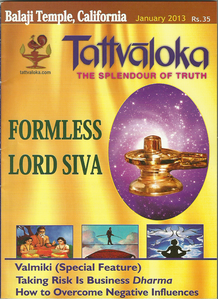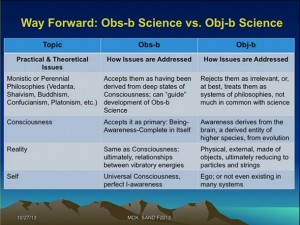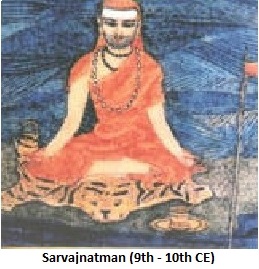 Everything that there is, is īśvara. That is why we can invoke mahāgaṇapati in a small mound of turmeric and even worship a milestone as īśvara. For us, trees, rivers, mountains, pillars, vāyu, ākāśa, bird, insect, snake, anything and everything is īśvara.
Everything that there is, is īśvara. That is why we can invoke mahāgaṇapati in a small mound of turmeric and even worship a milestone as īśvara. For us, trees, rivers, mountains, pillars, vāyu, ākāśa, bird, insect, snake, anything and everything is īśvara.
Though there are many Hindu’s who might not understand the philosophy, ask even a supposedly illiterate villager as to where God is, and prompt will come his reply “God is everywhere”. It is only the Hindu religion where all its practices have arisen from its underlying philosophy.
There are a number of philosophies, both in the past and the present, from the west, such as those of Aristotle, Socrates, Satre, Descarte etc. which are not religions; there are religions such as the Abrahamic, actively practised and proselytized, which do not have any meaningful philosophy behind them. That we are able to worship īśvara in every form, conceivable and inconceivable, is an example of applied philosophy practiced as religion.
We do not worship idols. We worship īśvara who is form manifest. We are not mere form worshippers. We worship the formless, on whom all the forms are superimposed. How can anyone worship the formless? The formless is to be understood as the truth and the substratum. The forms are the one that can be worshipped.
There are theologies that say there is one God. The problem with this thinking is which or whose “One God” is the true God. Everyone lays claims to their own God as the real, ultimate, and final one. It is this issue that has been plaguing the world. It is in the name of this issue that millions were persecuted in the past, and massacres are being committed currently.
We do not subscribe to this view of one God. We say there is ONLY God. All that there is, is only God; because he is the upādāna kāraṇa of this entire jagat. kāryaṁ sakartṛkaṁ kāryatvāt ghaṭavat. Therefore, all that is experienced is God indeed; even the experiencer is God, for there is nothing other than God.
This jagat, which is īśvara sṛṣṭi, so purposefully and well created, functions in an orderly manner. There are a number of orders that govern the functioning of the world. Let is look at some orders in order to understand yet another dimension of īśvara.
- The Physical Order – There is an order that exists in nature in the form of physical laws; for example, the intrinsic nature of fire is heat and light – and fire burns anything that comes in contact with it, irrespective. We say fire burns, but think about it, is it fire that burns? The Law of Gravity works, irrespective of who or what falls. The sunrise, the seasons, the rains, its failure, everything works within īṣvara’s order.
- The Physiological Order – whatever we eat is digested and absorbed by the digestive system, taken to various parts of the body by the circulatory system, the waste thrown out by the excretory system, food converted into reproductive power by the reproductive system, and requisite oxygen continously supplied by the respiratory system.
- The Emotional Order – emotions such as anger are within the emotional order of īśvara. Anger is a reaction and not an action – no one can consciously become or remain angry – if you don’t believe me, try and be angry for the next 30 secs – you will find yourself smiling rather than angry. Even desire is within the order of īśvara. These reactions cannot be controlled, but they can be managed – we shall see the monumental implications of these truths later in the series.
- The Social Order – ahimsā – non-injury – our scriptures say ahimsā paramo dharmaḥ – non-injury is the foremost of all dharmas – everyother dharma arises from this basic dharma – no one wants to be hurt including animals; but it is only humans that do not want to hurt others, atleast that is the expectation from them. varṇāśramadharma, as prescribed by the scriptures, is an excellent system that takes competition out of the equation, thereby making everyone a contributor rather than a competitor.
īśvara is the very order manifest in the jagat. In the light of this vision, everyone in the world, everything that happens, all stand validated. There is no one to blame, there is nothing to feel guilty about.
I would like to draw the attention of the readers to a very important difference between our vision and other religions. While the others consider dharma as the mandate of īśvara, we consider dharma as the very īśvara manifest. dharma as God’s mandate, is open to (mis)interpretation. dharma as God manifest, is to be understood and abidbed by. This means we are always within īśvara. If it has happened, it is within īśvaras order, irrespective of whether we consider what happened as just or not.





